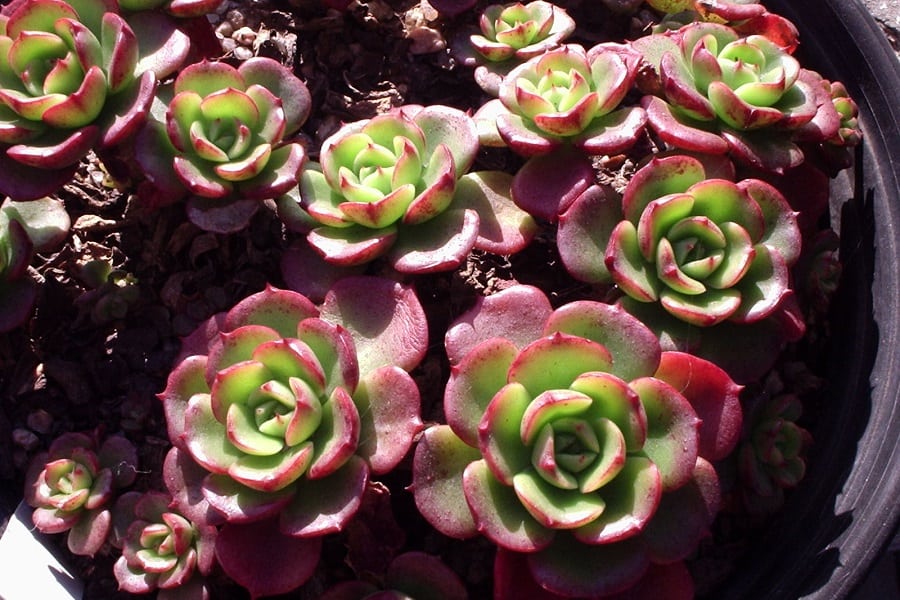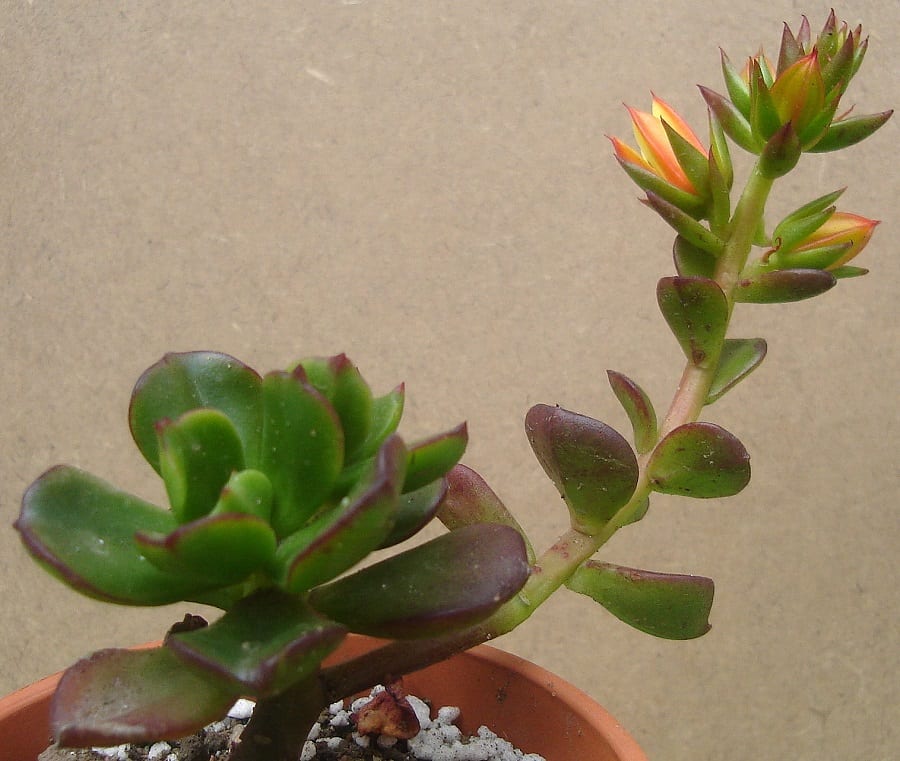Echeveria multicaulis: Bringing a Touch of Rosette Perfection to Your Home
Are you searching for an eye-catching, low-maintenance houseplant to brighten up your living space? Look no further than the stunning Echeveria multicaulis! This rosette-forming succulent, with its vibrant copper-hued leaves, is a true showstopper that demands to be admired. And the best part? It’s an absolute breeze to care for, making it the perfect addition to any home, even for those without a green thumb. Get ready to be captivated by the rosette perfection of Echeveria multicaulis!

Contents
About Echeveria multicaulis
Native to Mexico, Echeveria multicaulis is a petite succulent known by several charming nicknames, including Copper Rose, Copper Leaf, and Copper Roses. Belonging to the Crassulaceae family, this branching succulent features spacious green leaves that develop a striking reddish-copper tinge when exposed to ample sunlight. During its blooming season, Echeveria multicaulis produces a delightful display of yellow, orange, and red flowers, adding to its overall visual appeal.
Check this out:
160+ Amazing Echeveria Types with Pictures
Echeveria multicaulis Care Guide
Light Requirements
Echeveria multicaulis thrives in bright, direct sunlight, requiring at least 4 to 5 hours of exposure daily. Placing your plant outdoors during the summer months will help it flourish, but be mindful of intense afternoon sun, which can lead to sunburn.
If growing indoors, position your Echeveria near a south or west-facing window for optimal light. Alternatively, consider investing in a high-quality grow light to supplement natural light, ensuring your plant receives the radiance it craves.

Watering Needs
Echeveria multicaulis is a drought-tolerant plant that stores water in its fleshy leaves, making it resilient to dry conditions. Only water your plant when the soil has completely dried out, thoroughly soaking the soil until water drains from the bottom of the pot. Avoid allowing water to accumulate on the rosette, as this can lead to rot and fungal issues. During the spring and summer growing season, you may need to water more frequently than in the winter months.
Choosing the Right Soil Mix
As with most succulents, Echeveria multicaulis prefers a well-draining, porous soil mix to prevent excess moisture from accumulating around its roots. A standard succulent potting mix, readily available at most nurseries and garden centers, is an ideal choice. Be sure to select a container with drainage holes to facilitate proper water drainage and prevent root rot.
Fertilizing for Healthy Growth
While not strictly necessary, providing your Echeveria multicaulis with an appropriate succulent or cactus fertilizer can promote healthy growth. Opt for a low-nitrogen formula and dilute it to one-quarter or one-third of the recommended strength to avoid fertilizer burn. Feed your plant every 2 to 3 weeks during the spring and summer growing period.
Temperature and Humidity
Echeveria multicaulis thrives in warm, dry conditions with moderate humidity levels. Indoors, aim for temperatures between 65°F to 80°F (18°C to 27°C) during spring and summer. In winter, a few degrees cooler around 60°F to 65°F (15°C to 18°C) is ideal.
This succulent does not tolerate cold drafts or temperatures below 50°F (10°C) for extended periods. Humidity levels should be kept around 40% to 50% to prevent issues like root rot or fungal diseases. Ensure your home has good airflow and avoid exposing your Echeveria multicaulis to excessive moisture or high humidity environments.
Potting and Repotting

When selecting a pot for your Echeveria multicaulis, choose one that is slightly larger than the root ball to ensure adequate drainage. Repotting is typically necessary only when your plant has outgrown its current container, which may be every 2 to 3 years. The best time for repotting is in the spring, just before the active growing season begins. Always allow the soil to dry completely before repotting, and be gentle when handling the plant to avoid damaging its roots or leaves.
Pruning and Grooming
As your Echeveria multicaulis matures, you may notice older, dried leaves at the base of the rosette. Gently remove these leaves by giving them a gentle twist or using clean scissors or pruners. This grooming process not only enhances the plant’s appearance but also encourages new growth and prevents the buildup of decaying matter.
Pests and Problems
Echeveria multicaulis is generally pest-resistant, but keep an eye out for common houseplant pests like mealybugs, spider mites, and scale insects. Promptly address any infestations with an appropriate insecticidal soap or neem oil treatment. Additionally, be mindful of overwatering, which can lead to root rot and other fungal issues.
Propagating Echeveria multicaulis
Echeveria multicaulis is a prolific propagator, giving you multiple options to expand your collection or share this beauty with friends. It readily produces offsets from the main stem, while leaf cuttings and seeds are also viable propagation methods.
For offsets:
- Wait until offsets are at least an inch wide before removing them from the mother plant
- Gently twist the offsets to remove them
- Allow the offsets to callus over for 1-2 days before planting
- Plant the calloused offsets in a well-draining soil mix
- Water lightly after planting to encourage root growth
For leaf cuttings:
- Carefully twist off a healthy leaf from the main plant
- Let leaf callus for 1-2 days
- Place calloused leaf on top of soil mix, gently pressing it into the medium
- In a few weeks, roots and a new rosette should emerge
For seed propagation:
- Collect seeds when seed pods have dried on the parent plant
- Sow seeds shallowly in a well-draining seed-starting mix
- Cover seeds with a thin layer of soil or grit
- Keep seed tray in bright, indirect light and water sparingly
- Once sprouted, pot on individual seedlings with care
With some patience, all three propagation methods allow you to easily multiply your Echeveria multicaulis collection. Just follow the straightforward steps to propagate this charming succulent.
